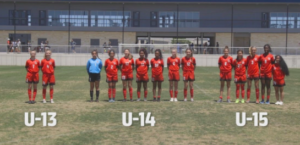Create Unstoppable Teams: Exploring the Advantages of Cross-Age Groups
Mixed-aged Teams, A benefit for a soccer club?
Soccer is a sport that has been enjoyed for generations, with millions of people playing it around the world. One of the most exciting aspects of soccer is the competition between teams, with clubs working hard to create strong teams that can win games and tournaments. In recent years, there has been a trend towards creating mixed aged teams for competitions, with clubs combining players across different age groups to form powerful teams. This article looks at the benefits of this approach.
WHAT IS BANDING?
The first benefit of mixed-aged teams is that they allow clubs to make the most of the talent available to them. Often, clubs have players who are exceptionally talented but are too young or too old to fit into their designated age group. By combining these players with others of different ages, clubs can create teams that are more diverse and well-rounded. This, in turn, makes it more likely that the team will be successful in competitions.
Another advantage of mixed-aged teams is that they promote learning and development. Younger players can learn from older players who have more experience, while older players can learn from younger players who bring fresh perspectives and new ideas. This creates an environment of learning and growth, which can help all players to improve their skills and abilities over time. It also helps to foster a sense of community and collaboration within the club.

Could banding be a benefit for your club?
Mixed-aged teams can also provide a challenge for players that pushes them to strive for excellence. By competing against players who are older or more experienced, younger players can develop their skills and abilities faster than if they only played against peers of similar age. Similarly, older players can stay motivated by playing with younger teammates who are hungry to succeed, pushing them to continue to improve their own games.
Finally, mixed-aged teams can help to create a more inclusive and diverse soccer culture. By breaking down traditional age barriers, clubs can create teams that are more representative of the wider community. This can help to attract a wider variety of players, including those who might not have played soccer otherwise. It also promotes social inclusion and can help to break down prejudices based on age.
Mixed-aged teams are a positive trend in soccer clubs around the world. They create opportunities to combine the skills and talents of players across different age groups, promote learning and development, provide a challenge to players to strive for excellence, and create a more inclusive and diverse soccer culture. Clubs that embrace this approach are likely to see the benefits in terms of success on the field, player development, and community engagement.

